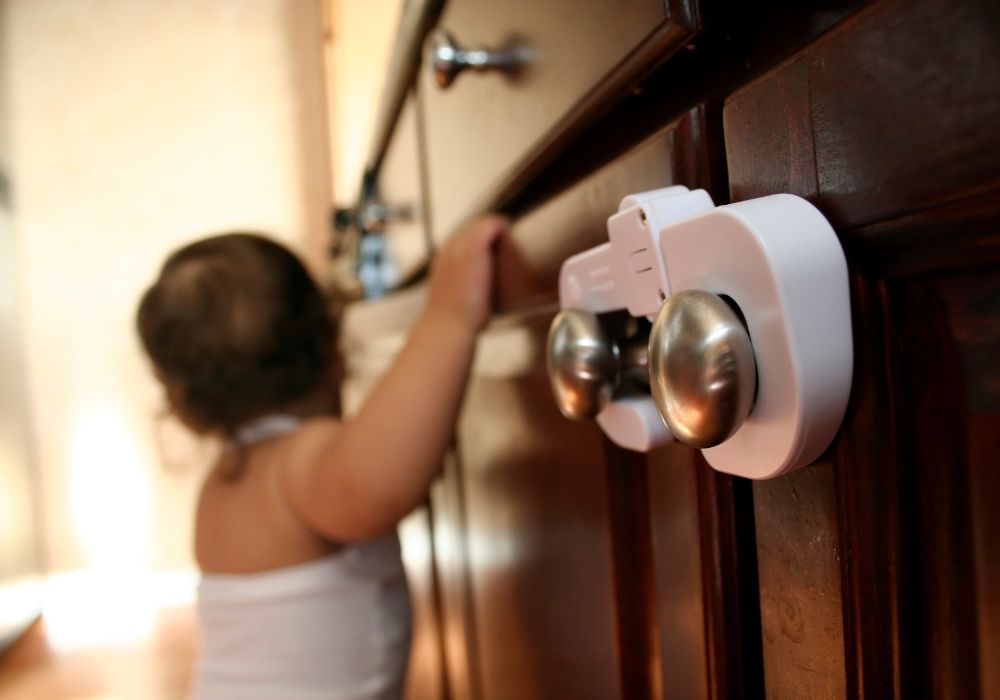Like any guest, babies are an important visitor that you want to be prepared for when welcoming them into your home. Unlike other guests, babies require a bit more thoughtful preparation and research to make sure they can be safe in your house. Luckily, preparing your home for babies isn’t too difficult, so whether you’re getting the house ready for your own child or the baby of friends and family, here are a few steps you can take.
Babies and children are naturally curious, and those that are a bit more mobile are eager to explore their worlds. Electrical outlets that are low to the ground are easy targets for their curious hands. Cover all electrical outlets with coverings.
Gates are a helpful way to keep young children away from hazardous areas, such as stairs. Consider adding gates to the bottom or top of staircases, or rooms you can’t easily block off, such as a room with an active fireplace or area with heavy weights and exercise equipment.
Babies are prone to putting everything into their mouths. This is a great method of exploring and understanding their world, but it can be hazardous when little objects come across their paths. Small objects from marbles to pebbles to board game pieces can easily become choking hazards. When preparing your home, scan the ground or low tables to ensure no choking hazards are in the room where the baby might be. Remove things like tablecloths or table runners, which a baby that is low to the ground could reach up and pull down. Get rid of long cords attached to blinds or drapes that a baby could put in their mouths. Also, keep plastics such as trash bags out of reach, as these can be suffocation hazards.
A low-to-the-ground coffee table made of glass or metal can have dangerous edges and corners for children who are just beginning to walk or crawl. Either remove these types of furniture from rooms where the baby will be, or buy thick padding that can attach to these objects and prevent heads or eyes from accidental collision.
Cabinets or drawers can be fascinating to young children, but they can be dangerous as well, whether that’s a swinging door smashing small fingers or knives and heavy pots and pans posing risks. Consider buying child-proof cabinet fasteners that don’t destroy the surface of the cabinet (for example, fasteners with heavy glue may rip the paint, whereas magnetic fasteners may be more gentle).
A cabinet lock can be helpful for keeping cleaners or other toxins out of reach, but if these aren’t behind locked doors, then consider putting them far from where a young child can access them.
Questions about home insurance? Contact a SeaMountain Homeowners Insurance Specialist today!
